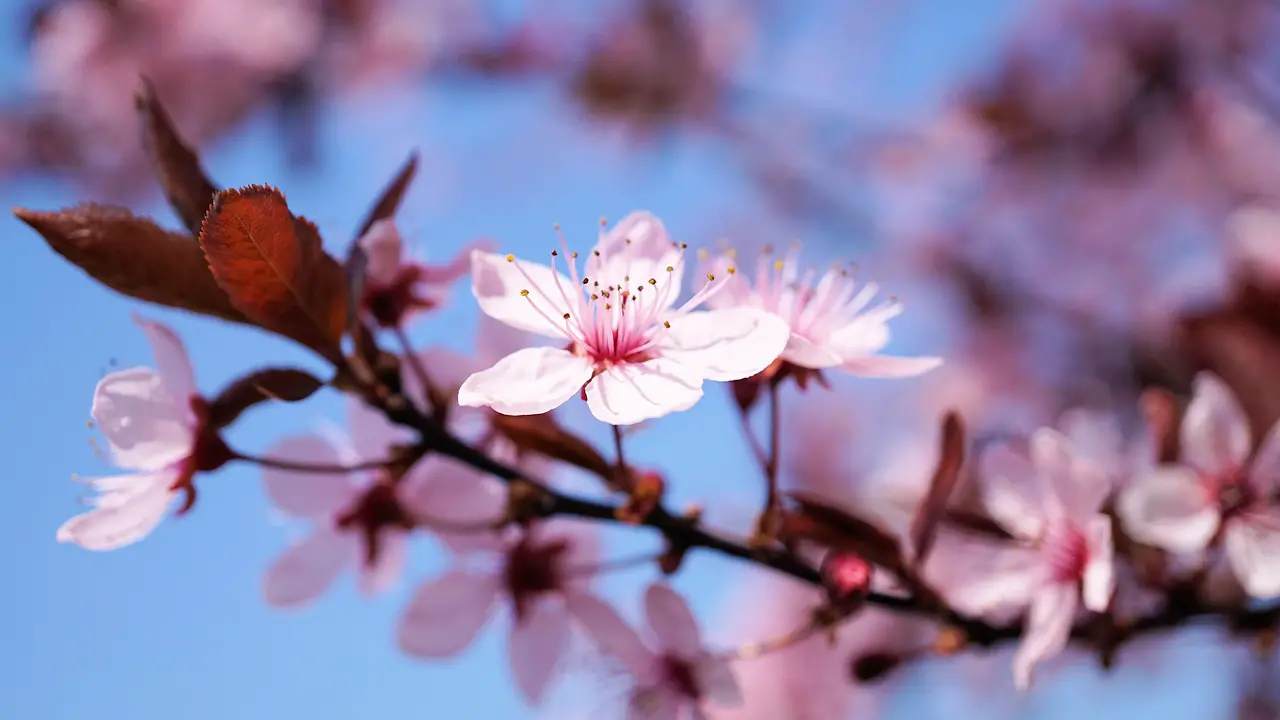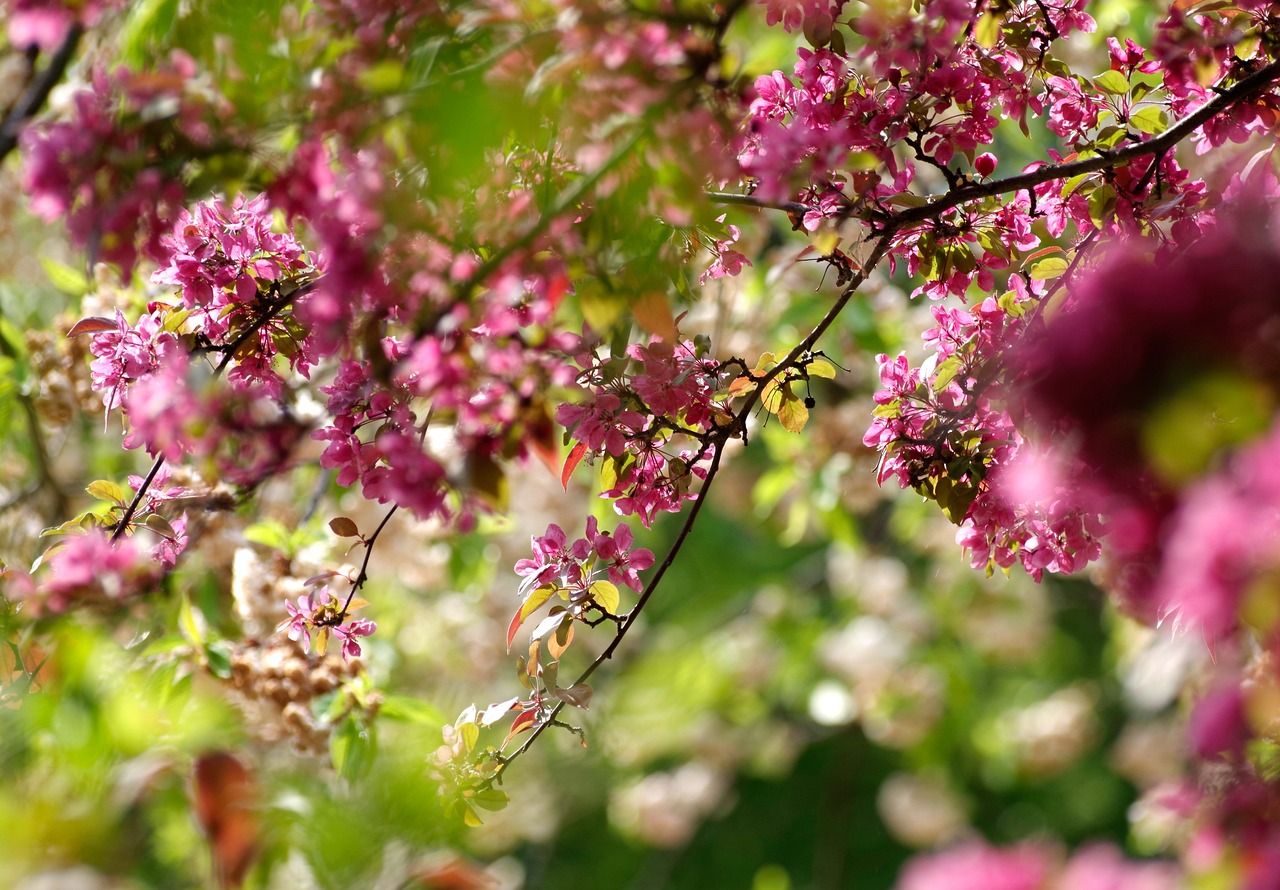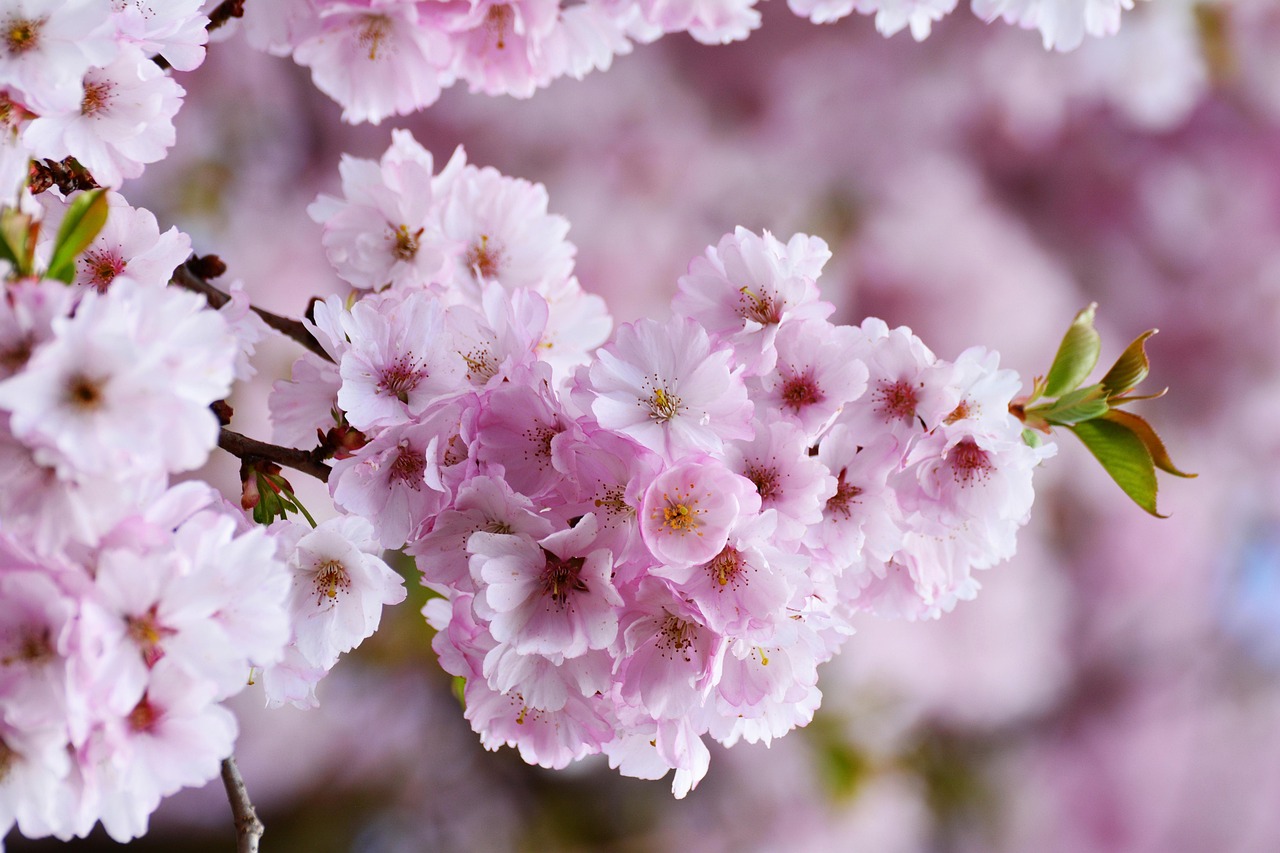Summer pruning is vital for cherry tree health, focusing on removing excess growth, improving air circulation, and enhancing fruit production. Conducted from late June to August, proper techniques like thinning and heading cuts foster vigorous growth, disease prevention, and a fruitful harvest, ensuring your cherry trees thrive year after year.
Cherry trees are a delightful addition to any garden. They provide beautiful blossoms in spring and delicious fruit in summer. However, proper care is essential to ensure they thrive. One crucial aspect of maintaining cherry trees is pruning, particularly during the summer months. Summer pruning focuses on removing unwanted branches and improving the overall structure of the tree. This technique is vital for promoting healthy growth and enhancing fruit quality.

Pruning can be an intimidating task for many gardeners. However, understanding the basics of summer pruning can make the process less daunting. The primary goals of summer pruning include:
- Enhancing sunlight penetration
- Improving air circulation
- Encouraging fruit production
- Controlling tree size and shape
By strategically cutting back on certain branches, gardeners can help their cherry trees focus energy on producing fruit rather than excessive foliage. It is essential to understand when and how to prune to maximize the benefits.
When to Prune Cherry Trees
The summer months, particularly late June through August, are ideal for pruning cherry trees. During this period, trees are in full leaf, making it easier to identify which branches need trimming. Additionally, pruning during the summer helps prevent the spread of diseases that can occur when trees are pruned in late winter or early spring.

Pruning in summer allows gardeners to see the tree’s structure clearly. It also encourages the tree to grow more vigorously after cuts are made. This increased growth can lead to a healthier tree overall.
| Month | Ideal Pruning Actions |
|---|---|
| June | Remove dead or diseased branches |
| July | Thin out crowded areas for better air flow |
| August | Shape the tree and remove unwanted growth |
By following a simple schedule, gardeners can ensure their cherry trees remain healthy and productive throughout the growing season. Another important factor in summer pruning is the type of cherry tree being cared for. There are two main categories of cherry trees: sweet cherries and sour cherries. Each type has unique characteristics that may influence how they should be pruned.
Types of Cherry Trees
Understanding the differences between sweet and sour cherry trees can help gardeners determine the best approach for pruning. Sweet cherry trees (Prunus avium) are typically larger and require more space than sour cherries (Prunus cerasus). Here are some key differences:

- Sweet Cherry Trees: These trees produce large, sweet fruits. They tend to have a more upright growth habit and can benefit from aggressive summer pruning to promote fruiting.
- Sour Cherry Trees: These trees are smaller and produce tart fruits. They generally require less pruning but may still need thinning to improve air circulation.
After identifying the type of cherry tree, gardeners can tailor their pruning techniques to suit its specific needs. This customization can lead to better outcomes in terms of fruit yield and overall tree health.
Pruning Techniques for Cherry Trees
There are several techniques that gardeners can employ when pruning cherry trees in the summer. Each method serves a different purpose and can help achieve specific goals for tree health and productivity.
Thinning Cuts
This technique involves removing entire branches at their point of origin. Thinning cuts help reduce overcrowding and allow more light and air to reach the inner parts of the tree.

Heading Cuts
Heading cuts shorten branches but do not remove them entirely. These cuts can encourage lateral growth, leading to a bushier tree with more fruit-bearing branches.
Removing Suckers
Suckers are vigorous shoots that grow from the base of the tree or along its trunk. Removing these shoots is essential as they divert energy away from fruit production.
Adopting these techniques during summer pruning can significantly improve the vitality of cherry trees. Each cut should be made with care to avoid damaging the tree, ensuring that it remains healthy and productive for years to come.
Tools for Summer Pruning
Having the right tools is essential for effective summer pruning. The quality of the tools can significantly impact the process and the health of the cherry trees. Here are some common tools used for pruning:
- Pruning Shears: These are ideal for cutting small branches and stems. A sharp pair will provide clean cuts, reducing the risk of disease.
- Loppers: For thicker branches, loppers offer more leverage and are perfect for reaching higher areas without using a ladder.
- Hand Saws: A hand saw is useful for larger branches that cannot be managed by shears or loppers. It’s important to use a saw designed specifically for pruning to ensure effective cuts.
- Gloves: Wearing gloves protects hands from cuts and scrapes while handling branches and tools.
- Safety Goggles: These protect your eyes from debris when cutting branches, especially when working with larger trees.
Using well-maintained tools can help prevent injury and make the pruning process more efficient. Always clean the tools before and after use to minimize the risk of spreading diseases between plants.
Common Mistakes in Summer Pruning
Even experienced gardeners can make mistakes during summer pruning. Being aware of common pitfalls can help ensure better results. Here are some frequent errors to avoid:
- Over-Pruning: Removing too many branches can stress the tree and hinder its growth. It is essential to maintain a balance between thinning and preserving enough foliage.
- Ignoring Tree Shape: Each tree has a natural shape that should be respected. Pruning should enhance this shape rather than impose an unnatural structure.
- Poor Timing: Pruning too late in the summer can interfere with fruit development. Aim to prune early enough to allow the tree to recover before fall.
- Using Dull Tools: Dull tools can crush branches rather than making clean cuts. This increases the risk of disease and slows healing.
Avoiding these mistakes will lead to healthier trees and improved fruit production. Being mindful during the process can make a significant difference.
Post-Pruning Care
After summer pruning, it is crucial to provide appropriate care for cherry trees. The following practices can help support recovery and promote healthy growth:
- Watering: Ensure the tree receives adequate water, especially during dry spells. Deep watering encourages root growth.
- Mulching: Applying mulch around the base of the tree helps retain moisture and suppress weeds. Organic mulch also adds nutrients to the soil as it decomposes.
- Fertilizing: A balanced fertilizer can boost growth following pruning. Apply it according to soil test recommendations to meet specific nutrient needs.
- Monitoring for Pests and Diseases: Regularly check for signs of pests or diseases that may arise after pruning. Early detection can help manage issues before they become severe.
These care practices are vital for ensuring that cherry trees recover quickly from pruning efforts. Healthy trees are more resilient against pests and diseases, promoting long-term productivity.
Understanding Tree Growth Patterns
A good understanding of how cherry trees grow can aid in effective pruning. Cherry trees exhibit specific growth patterns that influence their structure and fruit production. Here are some key points to consider:
- Growth Stages: Cherry trees have distinct growth stages: juvenile, mature, and senescent. Each stage requires different care and pruning approaches.
- Shoot Growth: New shoots typically grow during summer. Pruning during this time can redirect energy toward fruit production rather than excessive growth.
- Fruit Bud Formation: In cherry trees, fruit buds form on one-year-old wood. Therefore, it’s essential to preserve some of this wood during pruning to ensure a good harvest.
Understanding these growth patterns allows gardeners to make informed decisions about when and how much to prune, maximizing fruit yield while maintaining tree health.
The Benefits of Summer Pruning
Summer pruning offers several advantages beyond just enhancing tree health. These benefits contribute to a more fruitful harvest and overall better management of cherry trees:
- Improved Light Exposure: By reducing overcrowding, summer pruning allows sunlight to penetrate deeper into the canopy, improving photosynthesis and fruit quality.
- Enhanced Air Circulation: Better air flow helps prevent fungal diseases, which thrive in damp, crowded conditions.
- Increased Fruit Production: Focusing the tree’s energy on fewer branches can lead to larger and more abundant fruit.
- Simplified Maintenance: A well-pruned tree is easier to manage, making tasks like harvesting simpler and safer.
The array of benefits underscores why summer pruning is an essential practice for anyone looking to cultivate healthy cherry trees. Understanding these advantages can motivate gardeners to adopt effective pruning techniques consistently.
Pest and Disease Management in Cherry Trees
While summer pruning is crucial for maintaining healthy cherry trees, it is equally important to manage pests and diseases that can threaten their vitality. Cherry trees are susceptible to various pests and diseases, which can hinder growth and reduce fruit production. Understanding these threats and how to combat them is essential for any gardener.
Common Pests of Cherry Trees
Pests can cause damage to cherry trees by feeding on leaves, stems, or fruit. Here are some common pests to watch for:
- Cherry Fruit Fly: This pest lays its eggs inside the fruit, leading to premature drop or decay. Traps can be used to monitor their presence.
- Aphids: These small insects suck sap from leaves and can lead to yellowing and stunted growth. They can also transmit diseases.
- Spider Mites: These tiny arachnids thrive in hot, dry conditions. They weaken the tree by sucking out fluids, leading to mottled leaves.
- Japanese Beetles: These beetles feed on foliage, causing significant damage to the leaves. Handpicking or using traps can help manage their populations.
Regular inspections during the growing season can help catch these pests early. If infestations are severe, organic or chemical treatments may be necessary.
Common Diseases of Cherry Trees
In addition to pests, cherry trees are vulnerable to several diseases. Identifying symptoms early can help manage these issues effectively:
- Canker: This fungal disease causes sunken areas on the bark and can girdle branches, cutting off nutrients. Pruning infected areas and maintaining tree health helps prevent canker.
- Brown Rot: This affects blossoms and fruit, resulting in brown, mushy spots. Proper sanitation and removing infected fruit are key preventive measures.
- Powdery Mildew: This fungal disease appears as a white powdery substance on leaves. Ensuring good air circulation through pruning can help manage this condition.
- Black Knot: This disease produces dark, swollen galls on branches. Pruning out affected branches is crucial to control its spread.
Maintaining healthy practices, such as proper watering and fertilization, can help reduce the risk of diseases taking hold in cherry trees.
Soil Health and Nutrition
The health of cherry trees is closely linked to soil quality and nutrition. Rich, well-draining soil supports strong root systems and healthy growth. Here are some practices to enhance soil health:
Soil Testing
Conducting a soil test is the first step in understanding the nutrient content and pH of the soil. This information can guide fertilization practices.
- Collect soil samples from different areas around the tree.
- Send samples to a local extension service or lab for analysis.
- Review results to determine nutrient deficiencies or imbalances.
Fertilization Practices
A balanced fertilizer tailored to the specific needs of cherry trees can improve growth and fruiting. Consider these points when fertilizing:
- Timing: Apply fertilizer in early spring before new growth begins for optimal results.
- Type: Use a balanced fertilizer (e.g., 10-10-10) or one formulated specifically for fruit trees.
- Application: Follow package instructions for the correct amount based on tree age and size.
Organic Amendments
In addition to synthetic fertilizers, organic amendments can enrich the soil. Some beneficial options include:
- Compost: Adding compost improves soil structure and provides essential nutrients over time.
- Wood Chips: Incorporating wood chips into the soil can enhance microbial activity and improve moisture retention.
- Cover Crops: Planting cover crops in the off-season can prevent erosion and add organic matter when tilled back into the soil.
Investing time in soil health will yield long-term benefits for cherry trees, resulting in stronger growth and higher fruit quality.
The Role of Pollination
Successful fruit production in cherry trees relies on effective pollination. Understanding pollination is essential for ensuring a bountiful harvest. Here are key points about cherry tree pollination:
Types of Cherry Trees
Cherry trees are classified into two categories based on their pollination requirements:
- Sour Cherries: Most sour cherries are self-pollinating, meaning they do not require another tree for pollination. However, having multiple trees can increase yields.
- Sweet Cherries: Sweet cherries typically require cross-pollination from another variety to set fruit successfully. Planting compatible varieties nearby enhances pollination success.
Attracting Pollinators
Encouraging pollinators such as bees is vital for effective pollination. Here are some strategies to attract them:
- Diverse Planting: Grow a variety of flowering plants around cherry trees to provide nectar throughout the growing season.
- Avoid Pesticides: Minimizing pesticide use protects beneficial insects that contribute to pollination.
- Create Habitats: Provide habitats like bee hotels or native flowering plants to support pollinator populations.
A healthy population of pollinators will significantly improve fruit set and overall production in cherry trees.
Managing Environmental Factors
Environmental factors play a significant role in the health and productivity of cherry trees. Understanding how to manage these elements can further enhance the success of summer pruning and overall tree care. Here are some key factors to consider:
Temperature and Weather Conditions
Cherry trees thrive in specific temperature ranges, and extreme weather can impact their growth and fruiting. Here are some tips for managing temperature-related challenges:
- Frost Protection: Late spring frosts can damage blossoms. Use frost cloths or row covers to protect flowers if a cold snap is forecasted during bloom time.
- Heat Stress: High temperatures can stress trees. Ensure consistent watering during hot spells to maintain soil moisture and protect the roots.
- Wind Protection: Strong winds can damage branches and flowers. Planting windbreaks, such as shrubs or taller plants, can help shield cherry trees.
Water Management
Proper watering practices are vital for cherry tree health, especially during the summer months. Here are some strategies to ensure adequate hydration:
- Deep Watering: Instead of frequent light watering, deep watering encourages roots to grow deeper into the soil, promoting stability and drought resistance.
- Drip Irrigation: This system delivers water directly to the root zone, reducing evaporation and ensuring efficient water use.
- Mulching: Applying a layer of mulch around the base of the tree helps retain soil moisture and regulate temperature.
Harvesting Cherry Fruits
A successful summer pruning regimen culminates in a fruitful harvest. Knowing when and how to harvest cherries is essential for enjoying the best flavor and quality. Here are some tips for harvesting:
Timing the Harvest
Cherries should be harvested when they are fully ripe. Here’s how to tell when they are ready:
- Color: Ripe cherries will have a deep color, whether red or yellow, depending on the variety.
- Taste Test: Sampling a few cherries is the best way to determine ripeness. They should be sweet and flavorful.
- Firmness: Ripe cherries should be firm but slightly yield to gentle pressure.
Harvesting Technique
To avoid damaging the tree or the fruit, follow these harvesting techniques:
- Use Gentle Pressure: Hold the stem of the cherry and twist gently to detach it from the tree.
- Avoid Pulling: Pulling on the fruit can damage branches and lead to fruit drop.
- Harvest in Dry Conditions: Picking cherries when they are dry helps prevent mold and decay.
Long-Term Care for Cherry Trees
The care of cherry trees does not end with summer pruning and harvesting. Long-term maintenance ensures trees remain healthy and productive for many years. Consider these ongoing care practices:
- Annual Pruning: While summer pruning is essential, annual dormant pruning in late winter or early spring helps shape trees and remove dead or diseased wood.
- Pest and Disease Monitoring: Regular inspections throughout the year will help catch any emerging issues early, allowing for timely intervention.
- Soil Management: Conduct soil tests every few years to assess nutrient levels and amend as necessary to support ongoing growth.
- Seasonal Mulching: Replenish mulch each year to maintain moisture retention and suppress weeds.
Final Thoughts
Summer pruning is an invaluable practice for maintaining healthy cherry trees. The benefits of improved tree structure, enhanced air circulation, and increased fruit production make it a worthwhile endeavor for any gardener. Coupled with effective pest management, soil health practices, and proper environmental care, summer pruning sets the stage for a bountiful harvest.
A successful cherry-growing experience requires understanding the unique needs of these trees. By implementing the techniques outlined in this article, gardeners can ensure their cherry trees thrive year after year. Whether you are a novice gardener or an experienced grower, mastering summer pruning will undoubtedly lead to healthier, more productive cherry trees that provide delicious fruit for years to come.
As you embark on your cherry-growing journey, remember that patience and consistent care will yield the best results. Enjoy the beauty of cherry blossoms in spring and the sweet rewards of your labor in summer!
